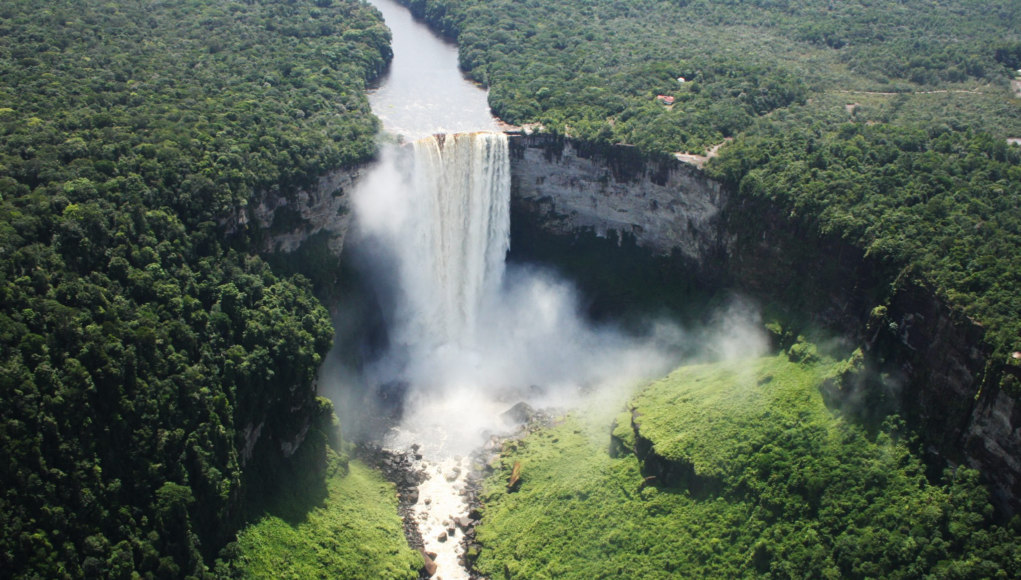By: Sueann Wickham
The Essequibo region of Guyana which remains a focal point in the ongoing controversy with Venezuela, holds great significance for the country. Its vast expanse is not only geographically substantial but is also endowed with a wealth of natural resources. Indeed, Essequibo plays a critical role in Guyana’s economic landscape. Through this article, the Guyana Standard aims to highlight the abundance of resources in this region.
Essequibo’s prominence stems from its diverse offerings, ranging from fertile land suitable for agriculture to significant mineral deposits. This rich tapestry of resources has not only helped to shape the region’s identity but has also become a source of contention with our western neighbour, Venezuela who is on a desperate quest to claim it.
Let’s take a deep dive now, into the astounding resources of the Essequibo.
Agriculture
Farming in Essequibo is a vital economic activity that not only contributes significantly to the nation’s agricultural output but also plays a crucial role in generating employment opportunities for many residents. The fertile land combined with favorable climatic conditions, make it conducive for various types of agriculture.
- Rice Cultivation: The Essequibo region is known for its extensive rice lands. Rice farming in the Essequibo not only fulfills domestic consumption needs but also contributes to exports, boosting the country’s agricultural economy.
- Sugar Production: Sugar cane cultivation and processing have been significant in the Essequibo region. Sugar estates in the area have been major contributors to Guyana’s sugar industry, providing employment to a considerable number of people. However, changes in the global sugar market have led to shifts in the industry.
- Vegetable and Fruit Farming: Beyond staple crops, the Essequibo’s agricultural diversity extends to the cultivation of various vegetables and fruits. Farmers in the region engage in the production of crops such as plantains, bananas, coconuts, and vegetables, meeting both local and potential export demands.
- Employment Opportunities: Farming activities in the Essequibo region also create a substantial number of jobs for local residents. From fieldwork to processing and distribution, the agricultural sector employs a diverse workforce.
Tourism and Biodiversity
The Essequibo region is not only a catalyst for agricultural development but also boasts diverse ecosystems and various forms of cultural heritage, making it an attractive destination for tourism. Here are some aspects of Essequibo’s tourism and biodiversity:
- Rivers and Waterfalls: The Essequibo River, one of the longest in South America, flows through the region, offering opportunities for excursions and water-based activities. Additionally, attractions like Kaieteur Falls, located on the Potaro River, are among the world’s largest single-drop waterfalls, drawing nature enthusiasts and adventure seekers.
- Biodiversity: The Essequibo region is characterized by lush rainforests and diverse flora and fauna. The pristine ecosystems support a variety of wildlife, including numerous bird species, mammals, reptiles, and amphibians. It is a haven for nature lovers and birdwatchers.
- Indigenous Communities: The Essequibo region is home to several indigenous communities with unique cultures and traditions. Some of these communities include Akawini, Mainstay, Mashabo, Tapakuma, Kabakaburi, Karawab, Santa Rosa, Shulinab, Maruranau, Aishalton, Shea, and Potarinau. Visitors often get the opportunity to engage with residents of these communities, learning about their way of life, traditional crafts, and rituals.
- Kaieteur National Park: Kaieteur National Park, encompassing Kaieteur Falls, is a protected area in the Essequibo region. The park not only preserves the stunning natural beauty of the falls but also the surrounding ecosystems, providing a sanctuary for a wide range of flora and fauna.
- Eco-Tourism: The emphasis on eco-tourism in the Essequibo region promotes sustainable practices and responsible tourism. Visitors are able to explore the region’s natural wonders while minimizing their environmental impact, contributing to the preservation of its biodiversity.
- Adventure Tourism: The varied landscapes of the Essequibo region offer opportunities for adventure tourism. Activities such as hiking, trekking, and exploring the rainforest provide a thrilling experience for those seeking outdoor adventures.
Mineral wealth
The extraordinary quantity of mineral wealth embedded in the Essequibo’s subsoil fuels Guyana’s mining industry. Gold, bauxite, and diamonds extracted from this contested territory play a pivotal role in the nation’s economic prosperity. Here, we explore some of the rich minerals mined in this region.
- Gold Mining: Essequibo is particularly renowned for its gold deposits, making Guyana one of South America’s leading gold producers. Small and medium-scale gold mining operations are prevalent, with miners utilizing both traditional and modern extraction methods. This sector provides livelihoods for many, ranging from individual prospectors to larger mining enterprises.
- Bauxite Mining: Bauxite, the primary ore for aluminum production, is another key mineral found in the Essequibo region. The bauxite industry has historical roots in Guyana and has played a crucial role in boosting nation’s economy, being the lead revenue earner at one point.
- Diamond Mining: The Essequibo region also hosts diamond deposits, adding to the diversity of minerals extracted. Diamond mining operations, often carried out by small-scale miners, contribute to the gemstone industry. The extraction of diamonds provides income for local communities engaged in mining activities.
Oil wealth
Oil Discoveries: Since 2015, Guyana has discovered substantial oil reserves in its Stabroek Block, located off the coast in the Atlantic Ocean and adjacent to the sprawling Essequibo. Major oil companies, including ExxonMobil, Hess Corporation and CNOOC have been involved in exploration and extraction activities. Thus far, over 11 billion barrels of oil have been discovered in the Stabroek Block.
With the foregoing in mind, it is clear that the Essequibo region is not merely a piece of land; it represents the lifeline of Guyana and its economic vitality. Despite threats from Venezuela, Guyanese authorities have vowed to zealously guard this landmass and its precious resources, not just for this generation but for those to come.













